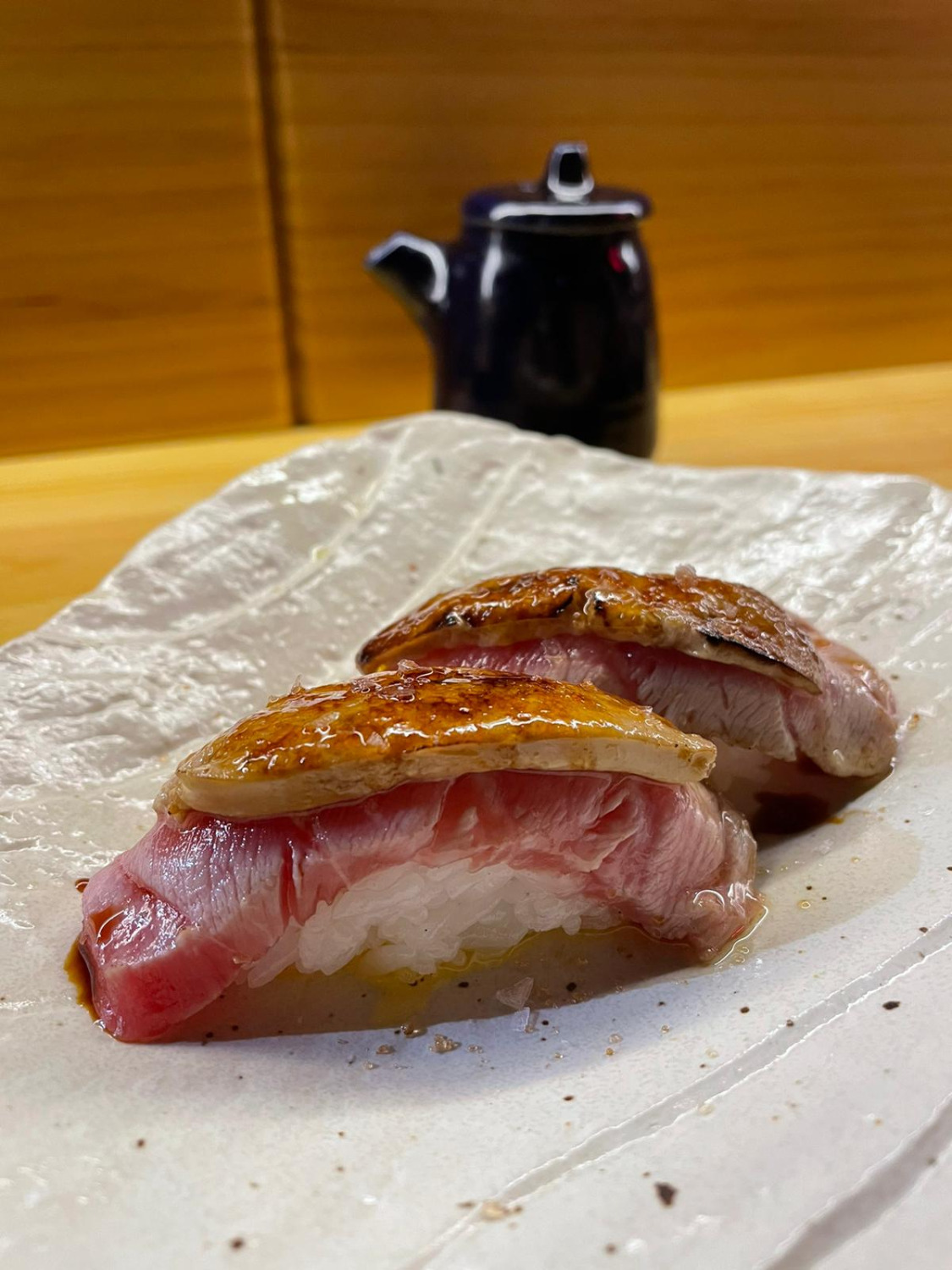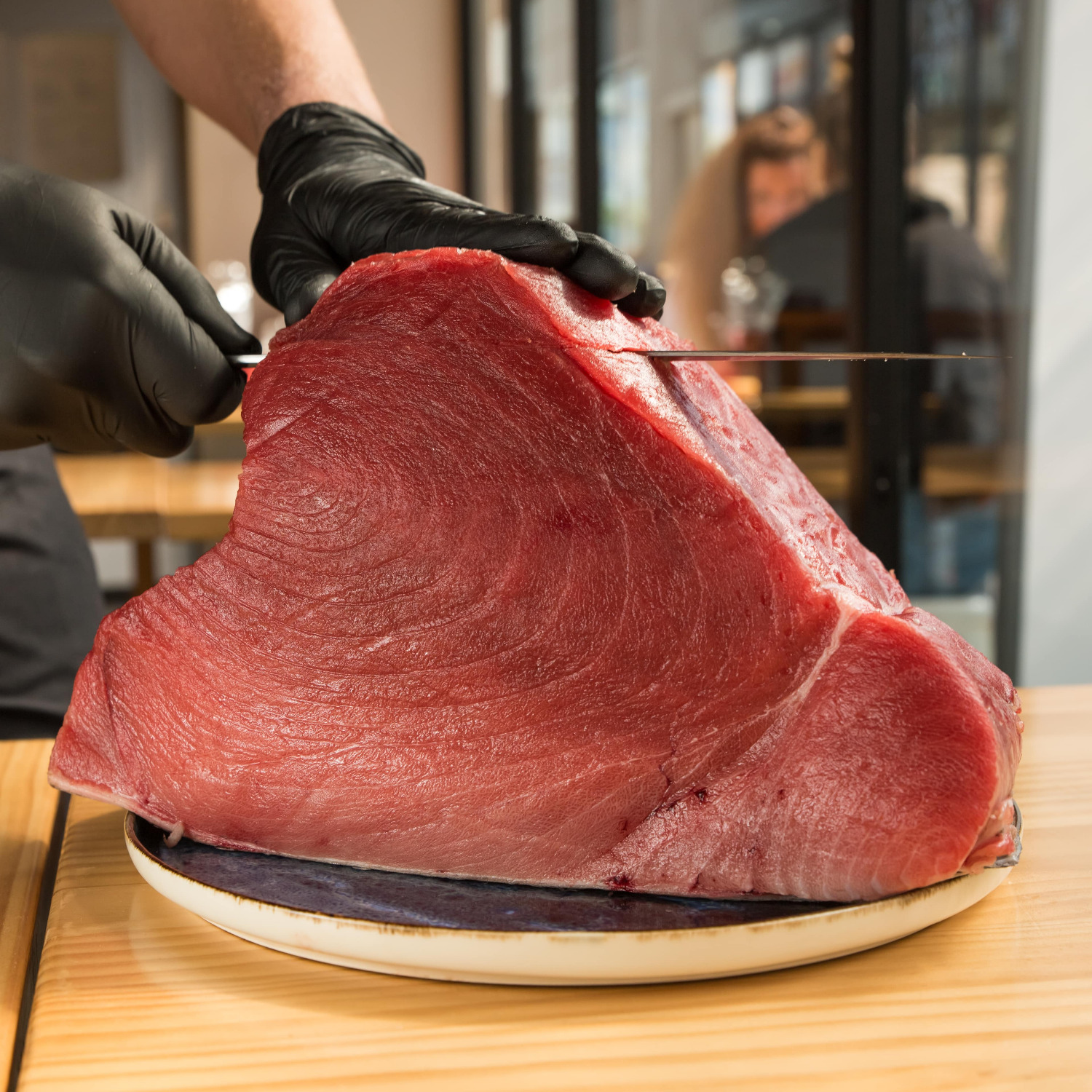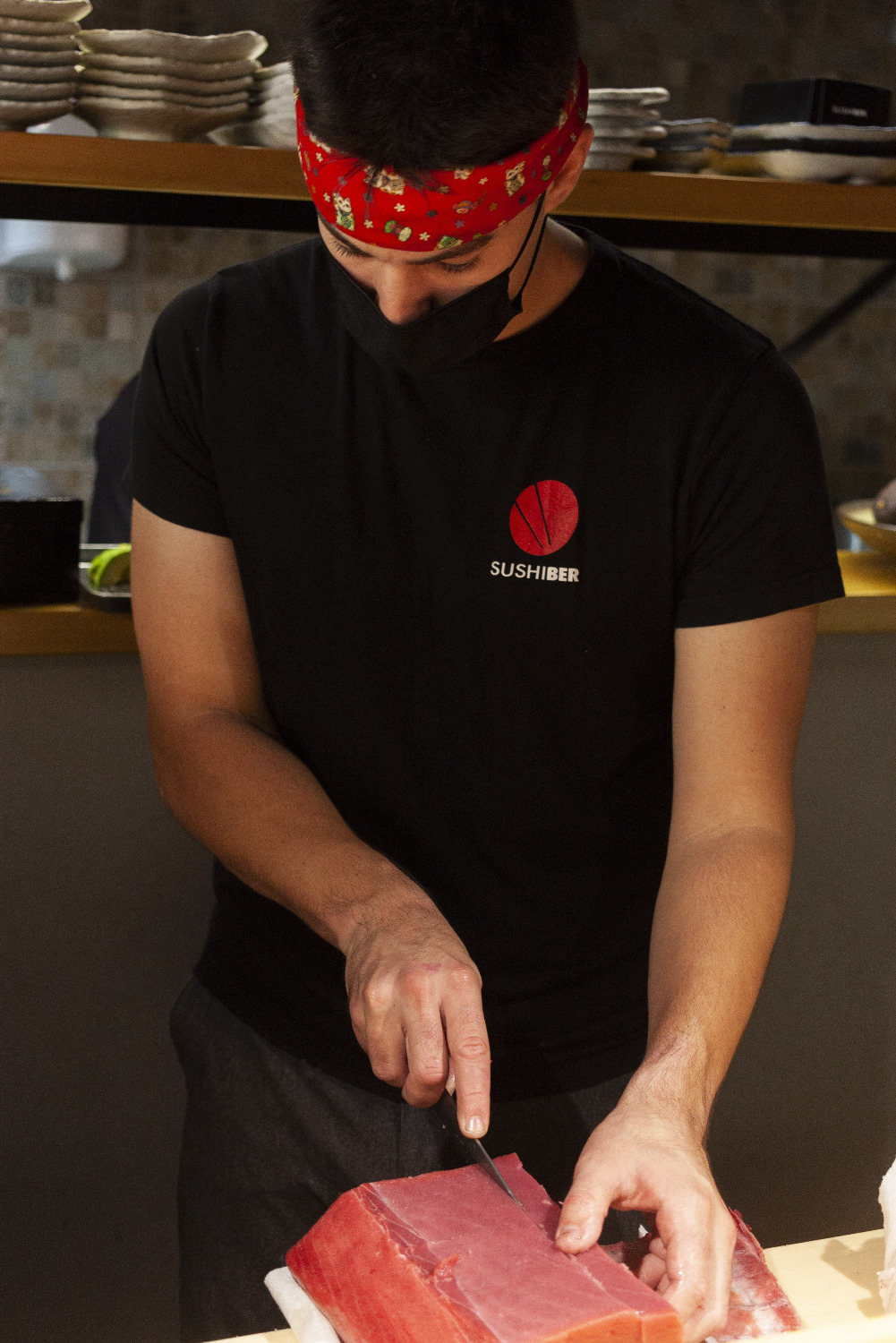If you have looked at our menus, either in our restaurant or on our website, you will have noticed the word ‘maguro’. Have you ever wondered what it means? Don't worry: today we will talk about what maguro is and how we serve it at Sushiber, the best Japanese restaurant in Denia.
Maguro, the diamond of the sea
Although you may not have heard this word used in other restaurants, it is very common in Japanese restaurants. This is because maguro is the name given to bluefin tuna in Japan. There are several types of tuna that are given this name. In Spain, we have Atlantic bluefin tuna (Thunnus thynnus), which can reach 700 kg and 4 m in length and is fished in the Atlantic and Mediterranean.
At Sushiber, we are committed to always bringing you the best, and every week we clean several kilos of bluefin tuna, which in our case comes directly from Ricardo Fuentes' farms in Cartagena, where they are responsible for farming this delicacy in a sustainable manner, ensuring that each specimen has the perfect level of intramuscular fat so that every bite can be enjoyed. These characteristics explain why its meat is so tasty and melts in your mouth.
The three types of tuna
Tuna is the only fish that is divided: due to its large size, a single tuna has three very different parts, as distinct as if they were three different fish. We eat the akami (literally ‘red meat’), the chutoro (semi-fatty meat) and the toro (fatty meat).
Akami
The akami of sushiya corresponds to the reddest and least fatty part of the tuna. This meat, with its intense, bright red colour, is prized for its fineness, pleasant acidity and subtle blood flavour. It is our favourite for making sushi rolls, crispy tacos and all the tartares we make in the restaurant. The akami of a good specimen is a delicacy of the highest quality: rich in aromas and flavours, its slightly sticky and melt-in-the-mouth texture is an unparalleled delight.
Chutoro
This is taken from the belly and loin of the fish and is perhaps the favourite part of connoisseurs. It is a rare cut found between the akami and the toro. This delicate variety is best appreciated in a small piece measuring a few centimetres: after the delicacy of the akami comes the beginning of the fat of the toro, which is more refined than in the authentic toro. Chutoro is a summary of tuna, the largest fish on our sushi bar. In this case, our sushi chefs extract the sakus (blocks of fish for sushi) to make all our nigiri and achieve those delicate pieces with a perfect balance between fish and rice. If you look at our menu, you will find them with caramelised onion and caramelised foie gras????. AMAZING!!
 The bull
The bull
Westerners generally go crazy for it. While the complexity of chutoro requires a certain amount of experience, the bull is simply melt-in-the-mouth, very tasty and easy to appreciate, which in no way detracts from its incredible flavour. It is found in the belly of the animal. In some areas, the belly toro may be striped. As with Kobe beef, the marbling is dotted with small white fat spots: this corresponds to the meat that covered the upper part of the ribs. It is simply delicious and incredible in the hands of a sushi chef.



